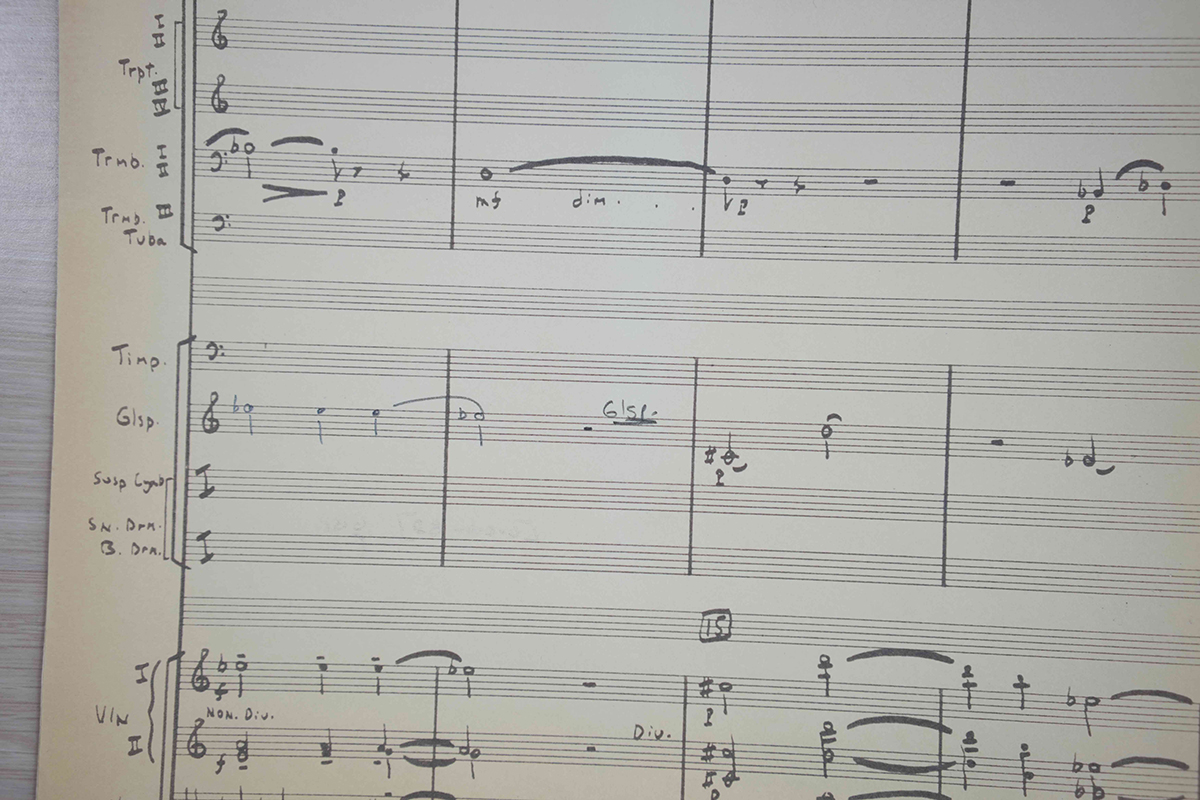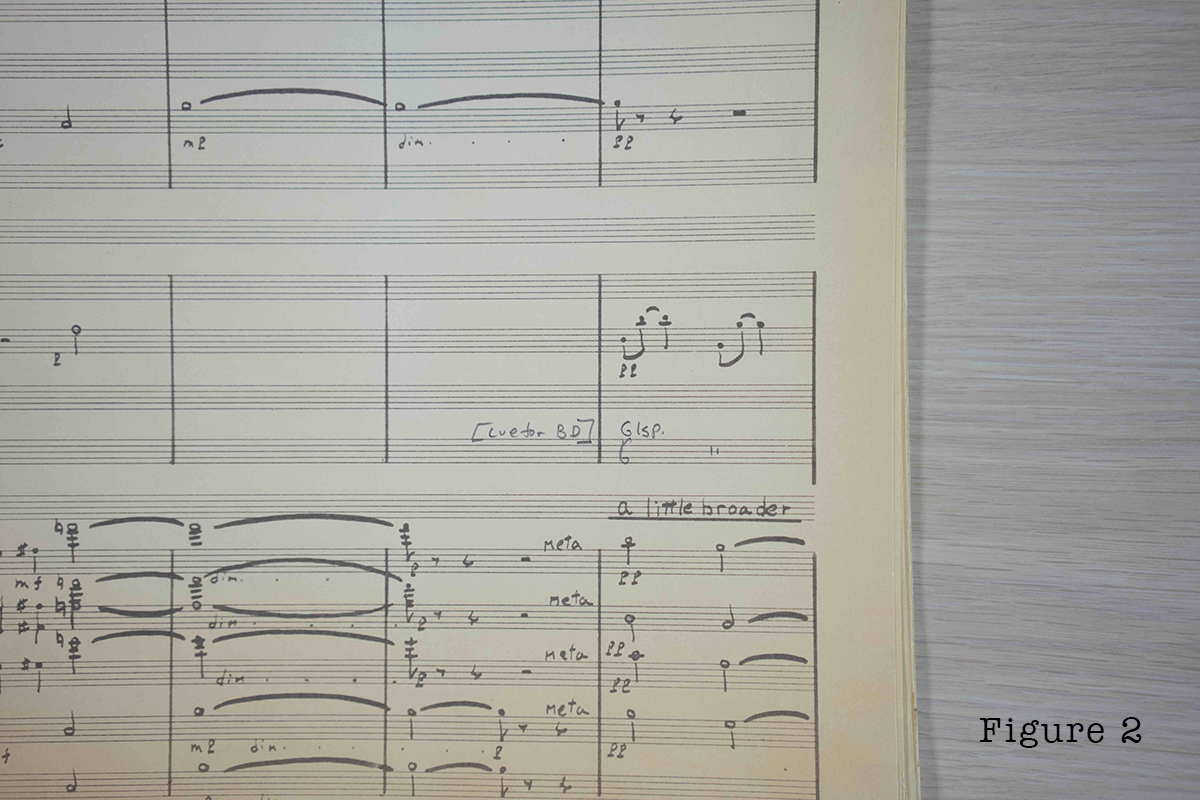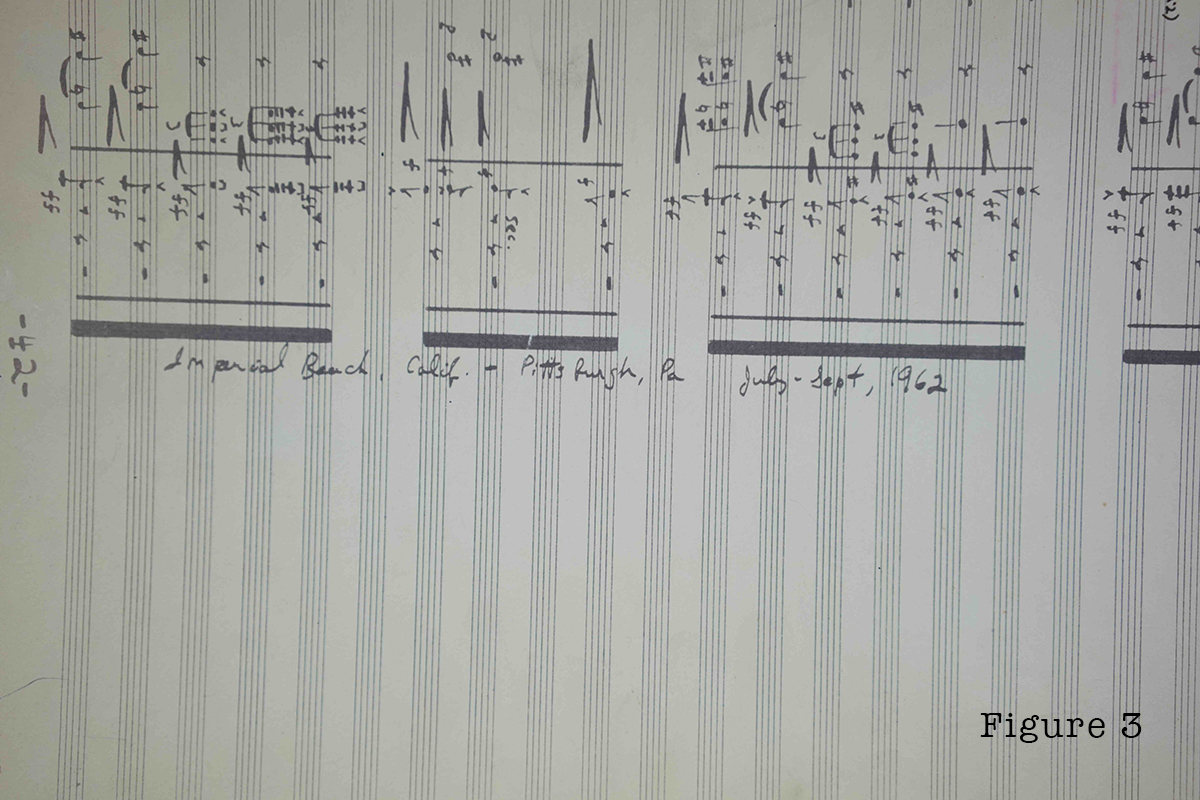
After leaving Juilliard in 1962, the composer Philip Glass (1937-) — known for his spare film scores, unconventional operas, and musical minimalism — came to Pittsburgh as a composer-in-residence with Pittsburgh Public Schools. With funding provided by the Ford Foundation’s Young Composers Program, Glass was commissioned to write music for the school district’s then-impressive range of musical ensembles — from orchestras and choirs, to marching bands, and woodwind quintets.
This variety in format and instrumentation meant that Glass’s stint in Pittsburgh was productive and varied: during the two years of his residency (the grant was renewed in 1963), Glass composed quartets, overtures, concertos, ariosos, and duets. And by his own account, Glass wrote these works rapidly: “In Pittsburgh … I wrote a huge amount of music [...]. I usually completed a piece in three weeks, then I’d follow up with yet another piece. I would go to the rehearsals and performances, too, because that was part of my duties” (108). Commissions, Glass writes, were likewise spontaneous: “Stanley Levine, the administrator of instrumental music [at Pittsburgh Public Schools], would say, ‘There’s a high school in South Hills and they’ve got a woodwind quintet. Could you write a piece for it?’ ‘Sure,’ I’d say.” Glass’s remembered account suggests that he was a kind of push-button composer, generating music as if by rote.
Glass’s Ford Foundation residency was his first professional appointment after Juilliard, but his time in Pittsburgh is often only mentioned in footnotes. A biography[1] published on Glass’s website in 2007 omits it entirely, while Glass dedicates just a few brief pages to the Steel City in his memoir, "Words without Music" (2015, quoted above). His perception of Pittsburgh is also hazy, and in his telling its culture is often indistinguishable from that of his native Baltimore: “Living in Pittsburgh revealed almost nothing to me that I didn’t already know from growing up in Baltimore” (108).
Glass’s comments imply that Pittsburgh was a stopover en-route to his mature style and musical vocabulary, a kind of apprenticeship revealing to Glass that he was on the wrong path. What followed, by Glass’s own account, was a formative and fertile period: "Dissatisfied with much of what then passed for modern music,” and frustrated with perceived inadequacy of his own musical training, Glass left Pittsburgh for Europe to study with Nadia Boulanger in Paris and then with Ravi Shankar in India.[2] “I needed to improve my ability to handle some basic materials of music — harmony and counterpoint,” Glass recalled. “Even after Juilliard, I still didn’t feel I had truly mastered them” (111).
 This shouldn’t suggest that Glass viewed his time in Pittsburgh negatively. Glass recalls the residency’s culminating honor with fondness: “At the end of the year we had a big concert, where all the music I had written was played. It was very satisfying. Here I was, twenty-six years old, and I was having a complete concert of my own music” (109). In "Words without Music," Glass also praises the student musicians who performed his work (“These were young people who could actually play”) and mourns the now unimaginable support music programs then received in public schools (108). Still, Glass’s Pittsburgh period — if such a thing can be said to exist — offers up many voids. Reflecting the various omissions and silences around Glass’s time in the city, the music Glass composed during his residency has either been suppressed, withdrawn from circulation, or lost.
This shouldn’t suggest that Glass viewed his time in Pittsburgh negatively. Glass recalls the residency’s culminating honor with fondness: “At the end of the year we had a big concert, where all the music I had written was played. It was very satisfying. Here I was, twenty-six years old, and I was having a complete concert of my own music” (109). In "Words without Music," Glass also praises the student musicians who performed his work (“These were young people who could actually play”) and mourns the now unimaginable support music programs then received in public schools (108). Still, Glass’s Pittsburgh period — if such a thing can be said to exist — offers up many voids. Reflecting the various omissions and silences around Glass’s time in the city, the music Glass composed during his residency has either been suppressed, withdrawn from circulation, or lost.
Yet even forgotten histories tend to leave traces. In the Libraries’ Special Collection is a musical score on loose sheets written by Philip Glass during his Pittsburgh residency (see fig. 1). It is a diazotype reproduction of Glass’s handwritten original, or holograph. Titled "Convention Overture for the All-City Orchestra," it was evidently intended to serve as a performance copy: scattered across its pages — their margins faded a sickly yellow on account of the chemistry of the diazotype process — are a number of penciled annotations in Glass’s hand (see fig. 2). These notes correcting errors or adding instructions for the performers suggest that Glass continued to revise his work after it had been copied. At the end of the score — Glass’s handwritten colophon is reproduced in the diazotype — is an inscription noting the places and date of its composition: Imperial Beach, California and Pittsburgh, 1962 (see fig 3.)

Glass is known as an innovator of minimalism in classical music — a style marked by tonal and rhythmic repetitions, silences, and its avant-garde approach to musical tradition and harmony. (Glass prefers to describe his work as “music with repetitive structures”). Under either label, though, this score seems odd: it is not, at first glance and to my untrained eye, either minimal or particularly repetitive.

The score belongs to the category of juvenalia — works made by an artist before they reached stylistic maturity or renown. It therefore offers a rare opportunity to glimpse Glass’s evolution during a period for which only fragments of his music survive.
Perhaps, then, this blogpost is a call to young musicologists or musicians with an interest in Glass’s career: while any performance of these forgotten works by Glass would no doubt need to be approved by Glass himself, what lessons might they hold for our understanding of one of musical minimalism’s most important figures?
Special Collections is home to a large number of musical rarities — a fact that surprised me when I arrived at CMU in 2020: Glass’s scores are joined by first editions of Beethoven, Bach, and Brahms, as well as a holograph manuscript by Gioachino Rossini (1792-1868), the composer of major operas, including the "Barber of Seville" and "William Tell." I’m still learning and discovering.
I’ll end with an invitation to join in that process of discovery. On December 7, I’ll be sharing some of these musical treasures in a free-to-attend online webinar, Fine and Rare III: Musical Marvels of Special Collections Unveiled. Join me again on January 25 for Fine and Rare IV: Inside CMU Libraries' Special Collections. I hope you can make it!
Sam Lemley, Curator of Special Collections
